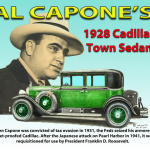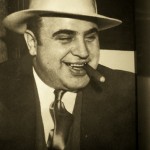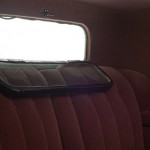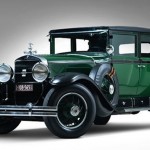
The armoured 1928 Cadillac that ferried notorious American gangster Al Capone around Chicago isn’t quite the bee’s knees for collectors these days.
It has sold at auction for US$341,000 – a year after being passed in at US$355,000 and seven years after fetching US$621,500.
It was bought in 2006 by Texas lawyer John O’Quinn, a notable US collector. O’Quinn died in a car crash in 2009 and his estate later put the ‘Caddy up for sale.
It remains a testament to the legend of Capone, architect of the famous St Valentine’s Day massacre in Chicago in the 1930s.
The Cadillac is quite the piece, what with its 2.5cm-thick window glass and rear window that folds down to accommodate backseat gunmen.
Although the car once carried some 1300kg of asbestos-wrapped steel plate in its body panels, most of the armor was removed when the car was first restored some 50 years ago.
The Cadillac spent most of its life as a museum attraction in Britain, Canada and at the Smoky Mountain Car Museum in Tennessee, which owned the car until O’Quinn bought it.
O’Quinn tracked down its history to the point where, in 2008, he found a man who had helped install the armour plating.
As a boy, Richard Capstran often helped out at his father Ernie’s panelbeating shop. Ernie had earlier fixed a damaged bumper on a Capone car, a Buick.
Richard told the story to the Chicago Tribune last year. “We fixed the Buick — did a nice job — then three or four days later, Capone’s men brought in the Cadillac,” Capstran said.
“They wanted Dad to cut out the back and install armor plate.
“My dad said ‘We don’t do that kind of work.’
Capone’s men said, ‘You do now.'”
The car had already been fitted with bulletproof glass, formed by gluing four sheets of glass together.
The back window was hinged to swing inward, and the side windows were designed so they could be wound up 5cm past the point where they closed, exposing 2.5cm holes at the bottom, through which Tommy guns could be fired.
“I remember poking my finger through,” Capstran said.
The Cadillac was identical to cars used by the Chicago Police Department and painted the same color. It even sported a police siren.
Capstran said Capone’s men insisted the car be backed into the body shop so nobody looking through the window could see what was being done.
“My dad showed me a piece of lead in the armor that was shot to test it,” he said. “It was so heavy we had to have help lifting it into place.
“We bolted it into position, then dad leaded and filed the body until it was like new. He painted it with 12 coats of lacquer and I did all the sanding. He put on the final coat and it was painted just like a Chicago PD car — the same two-tone.”
Capone came to collect the car a few days later. “It was summer, so no hat or overcoat, just a big cigar,” Capstran said.
“He asked what he owed us, and paid double. I don’t remember exactly; at least $200. Then he came round to where I was standing and asked who I was. ‘That’s my son Dickie,’ said dad.
“Capone gave me a $10 bill.”
O’Quinn flew Capstran to Houston to look at the car. Said Capstran: “It looked just like it did when it was parked in our shop.
“I pushed the button and the siren still worked. That one thing sure brought back my childhood.”





